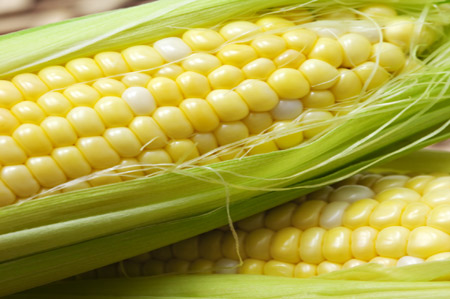Corn Planting Continues at a Snail’s Pace
Category: Grains
 (Agriculture) – As we stated last week, once again in 2014 we have delayed planting similar to in 2013, as most progress numbers are very similar to the slow start in 2013. It’s the delayed planting that is supporting the market, as we are unsure if planting will be done on a timely basis. However, one difference from 2013 to 2014 is that in one week in early May we planted over 40% of the crop in just one week. With the recent soaking we had of the entire corn belt over the weekend and into early week, it’s unlikely that it will be repeated in 2014 as little planting progress is expected the coming week.
(Agriculture) – As we stated last week, once again in 2014 we have delayed planting similar to in 2013, as most progress numbers are very similar to the slow start in 2013. It’s the delayed planting that is supporting the market, as we are unsure if planting will be done on a timely basis. However, one difference from 2013 to 2014 is that in one week in early May we planted over 40% of the crop in just one week. With the recent soaking we had of the entire corn belt over the weekend and into early week, it’s unlikely that it will be repeated in 2014 as little planting progress is expected the coming week.
Weather includes rain in much of the US in the northern plains (ND, SD, MN), the western corn belt (NE, IA, northern KS), the Lakes States (WI, MI) and the eastern corn belt (ILL, IND, OH, KY, TN) as well as the East (PA and the eastern Delta). There is even some snow falling in the far west (SD, ND). Some rain was heavy, with up to 2″ or more falling in some areas in the past week or so that will keep planters at bay for more than one week while soils run off and dry up. All in all, it means that little planting will be done for the coming 4 days across most of the country, and for some areas it might be 5-10 days before any planting will be done.
That is critical as we enter the prime planting time for corn and HRS wheat (early May), as little is likely to be accomplished in the coming week. Progress is already falling far behind normal, with corn planting in Monday’s report at only 19% planted vs. 28% normally, and corn emerged at only 3% vs. 6% normally. Soybeans are 3% planted vs. 4% normally, so they too are behind the average. Cotton planting is only 13% complete vs. 18% normally, with oats planting only 34% complete vs. 63% normally at this time.
HRS wheat is only 18% planted vs. 30% normally, with only 5% emerged vs. 9% normally. Barley is 33% planted, equal to average as the far west is well ahead of normal (not MN/ND/SD/MT). It has just been too cold and wet for planters to get going, and that is keeping us well behind normal planting progress for most crops. Even rice planting is only 45% vs. 56% normally. Sorghum is the only crop ahead of normal pace at 27% planted vs. 26% normally. Sugarbeets are only 16% planted vs. 47% normally done at this time. Overall, it is another late planting season, although not as late as 2013.
Winter wheat conditions continue to decline, with not only 33% rated G/E, down 1% from last week. The Pro Ag winter wheat yield model has declined another 0.1 bu/acre this week to only 46.2 bu/acre, now well below ‘trend’ at 47.68 bu/acre. So the crop has returned to its declining ways the past week with little rain (but the cool temps kept the crop from declining too rapidly).
We hit our target for advancing soybean sales at $12.40 Nov. futures Monday, April 28th and the market is trading there the past few days, so producers should have completed 2014 soybean sales on the recent rally back to the highs. Our target for advancing corn sales is $5.40 nearby corn futures, and $7.50 CBOT wheat futures for completing sales of these two crops. With the delayed planting and the terribly cold and wet weather we’ve experienced in the past week, its likely that prices will continue to rise (especially for corn) as it becomes clearer that planting progress will be delayed – perhaps even to later than the 2013 crop was planted! That means reduced yields from trend will be likely, and the projected carryout (especially of corn) might be lowered in reports after May.
It’s possible that if planting progress is delayed anther 2 weeks that additional acreage of corn and HRS wheat will be switched to soybeans, as the prime planting period for soybeans could be greatly improved from the poor conditions we’ve had thus far for planting corn/HRS wheat. And worse yet, if planting doesn’t improve with the weather, its possible we could have a recurrence of last year’s horrendous amount of prevented planting acreage. It’s likely for now that much of that lost acreage will be corn and HRS wheat, but it could expand into the soybean crop as well.




